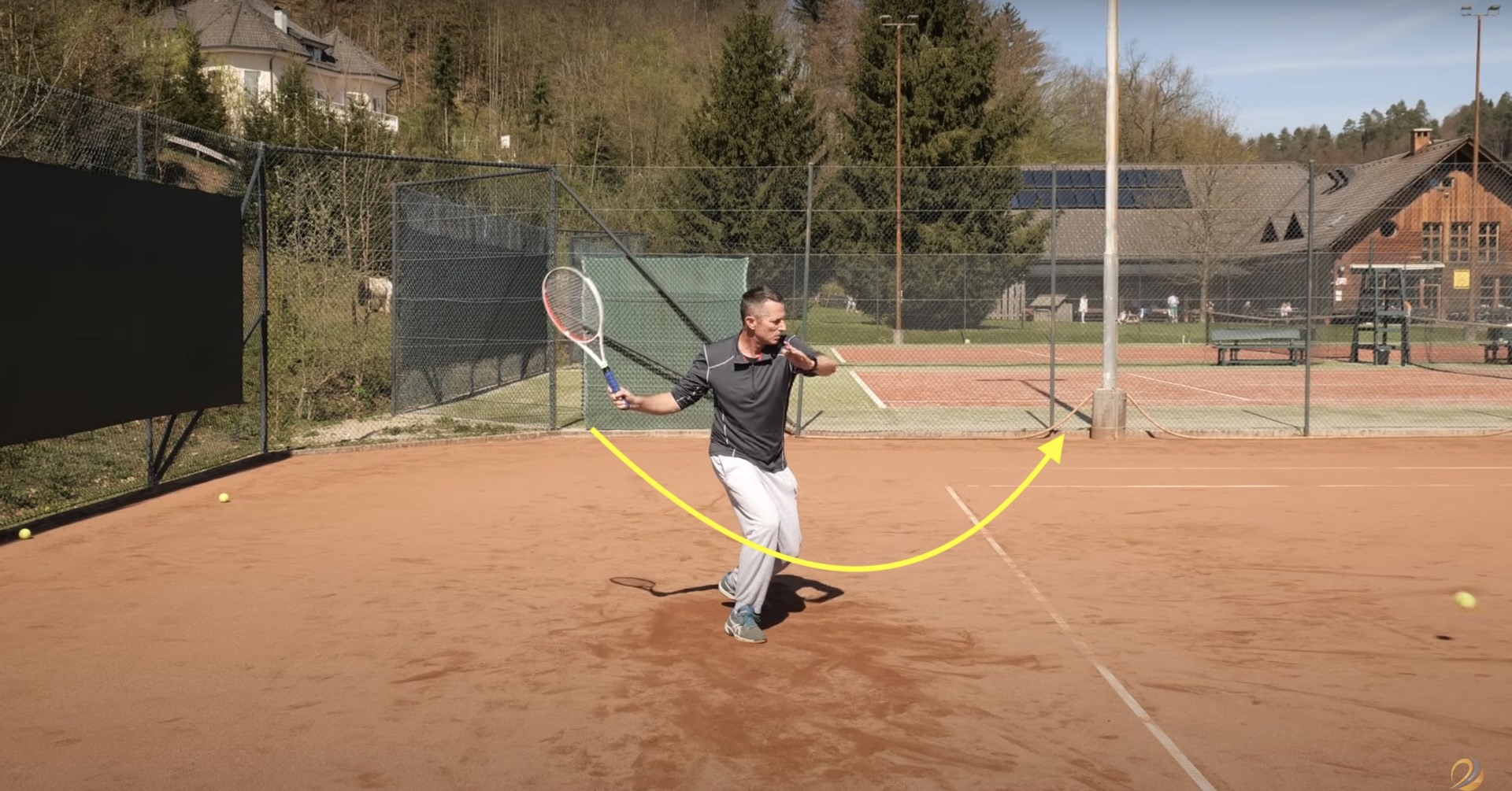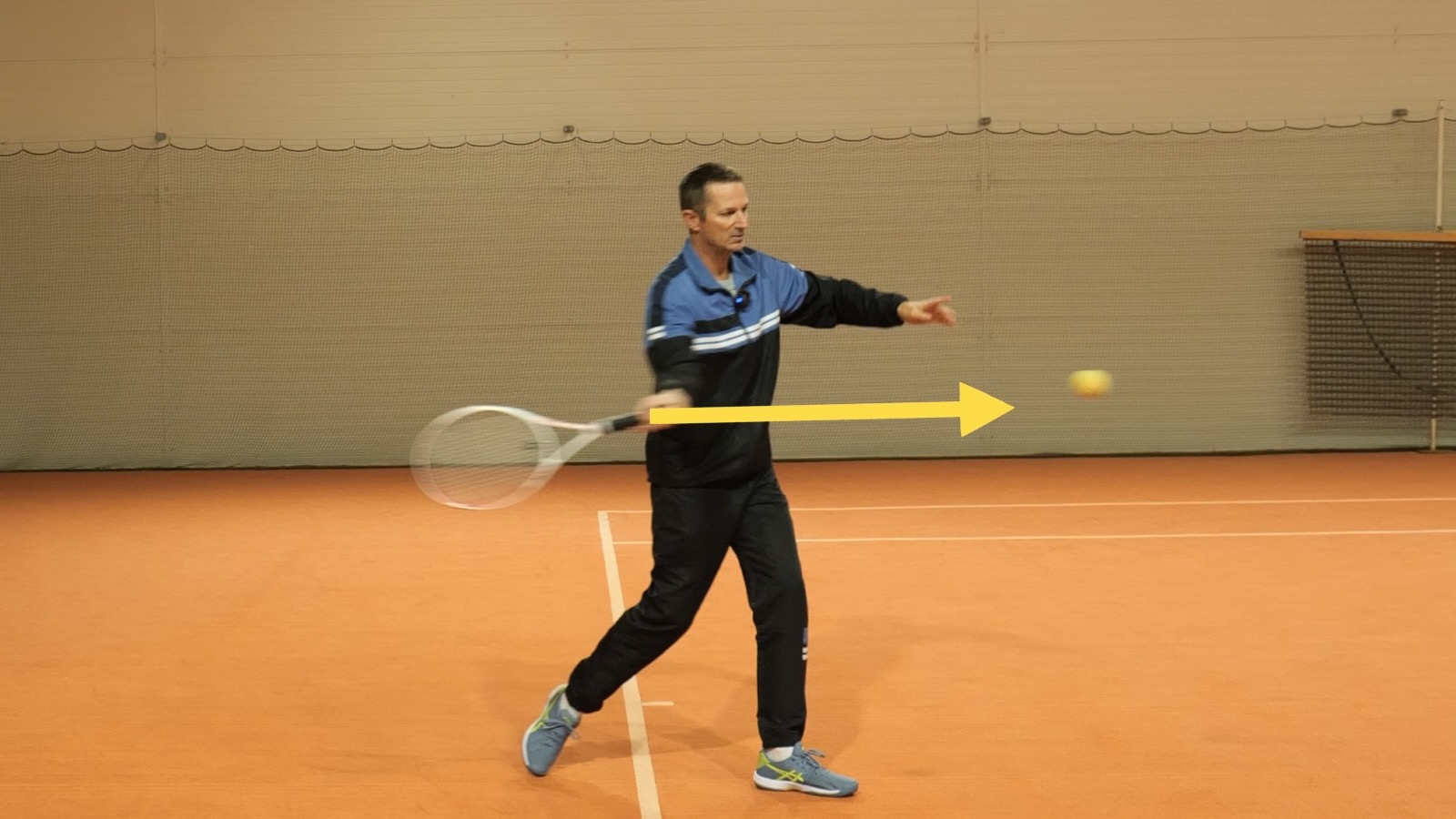One of the most basic movement concepts in tennis is to “beat the ball” to the hitting point. That means that, if possible, you want to arrive at the meeting point earlier than the ball.
You may already be doing that subconsciously, and this video article can simply help you improve that part of the game.
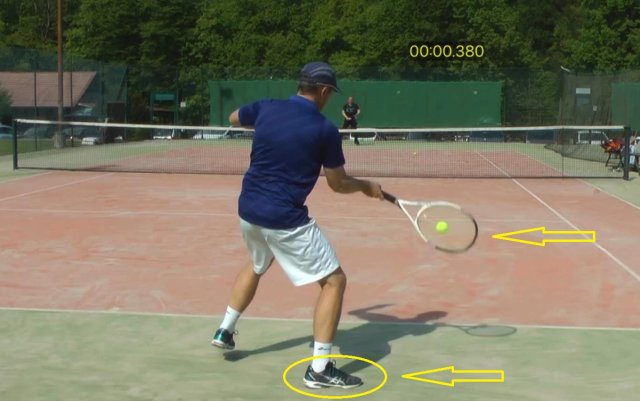
My right foot stopped moving 0.38 seconds before I hit the ball.
But some players, even at the intermediate level, are still missing this key concept of tennis footwork and timing.
Small changes here can lead to big improvements in their overall quality of tennis when they start to apply this concept.
Why Are You Not Beating The Ball
Before we go on the solutions, we need to understand the problem well.
So, why aren’t you beating the ball in the first place?
It’s actually not very intuitive to do so.
If you experiment without the racket first (so that your mind doesn’t think about tennis) and have your partner or a ball machine feed the ball away from you, you will realize that you’ll intuitively move with the MINIMUM speed required to reach the ball.
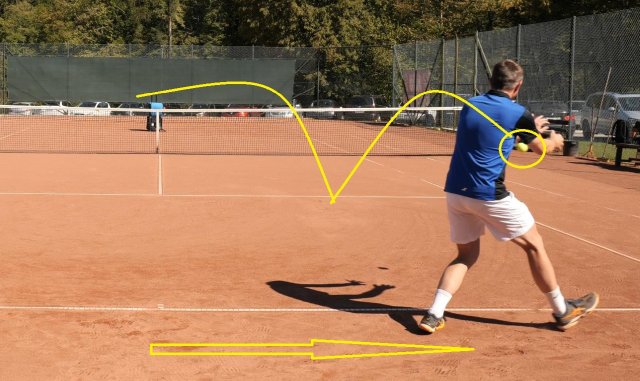
Moving like this to intercept the ball is very natural and intuitive.
Your brain will automatically calculate the minimum speed of movement so that you and the ball meet. That means that you will just get to the ball while still moving with no time to spare.
The brain does that intuitively because of the desire to conserve energy.
It’s a survival instinct running in the background, and unless we learn to override it, it will constantly put us in trouble in the game of tennis.
What Goes Wrong When You Don’t Set Up Early
There are two major problems when you don’t set up for a tennis stroke with time to spare.
a) Incorrect elements of stroke technique
Because you’re arriving late to the ball, you will feel rushed. That mental tension/anxiety will result in a physical tension, which will show as shortened backswings and tight wrists.
This will affect both forehand and backhand strokes, so we don’t have to go into specific techniques.
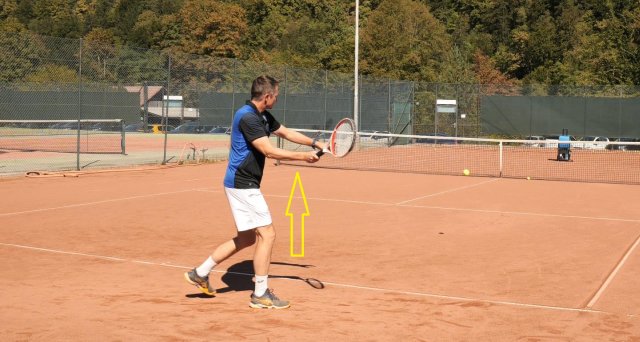
Short swing and tight wrist on forehand stroke cannot produce effortless power.
Shortened and tight backswings and wrists will result in hurried strokes with no effortlessness, and that will cause you to miss a lot of them or play them very short.
When you set up early for the shot, you won’t be in a rush. In fact, you’ll be more mentally relaxed, which will again show in your stroke technique as more relaxed and full swings and fully laid back wrists.
That will give you much more easy power and better ball control.
b) Too much movement for good ball control
When you don’t reach the ball with time to spare, you’ll still be moving when hitting the ball.
Let me put it this way so that you really understand the problem: you’ll be hitting a small moving ball with a moving racket while you are moving.
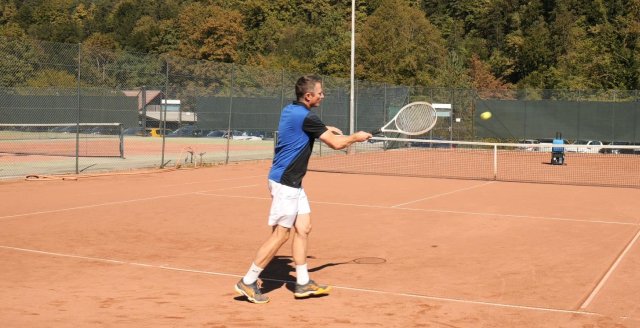
There are just too many moving parts to control the ball well…
Obviously that becomes a really difficult task, and hitting the ball precisely in the sweet spot and hitting it accurately into target areas is going to be very unlikely.
As a result, both the extra movement while hitting the ball and the compromised stroke technique are causing big problems in ball control.
How To Set Up Early For A Tennis Stroke
You can work on earlier positioning on the ball in two general ways:
1. Through awareness of time
When you reach the ball at the last moment, there will be no time between reaching the ball and hitting the ball.
When you “beat the ball,” there will be time between stopping and hitting the ball. In the above video example, I showed that there was 0.38 seconds between the time I stopped moving to the time that I hit the ball.
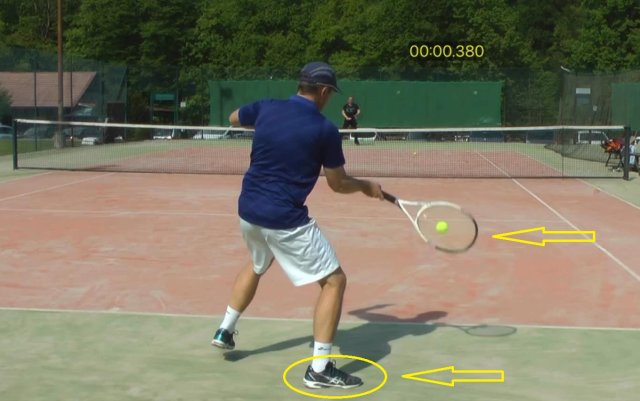
I beat the ball by 0.38 seconds to the meeting point.
As you play tennis and move around the court, pay attention to this time.
Are you aware of any time between you setting up for the shot and you hitting the ball?
Simply through that awareness, you’ll be able to keep improving your abilities to read the ball earlier, react faster and move faster to the ball so that you’ll be able to set up with time to spare.
2. Through exaggeration drills
A very simple yet effective way of improving your movement to the ball is through exaggeration drills.
Step 1: Be positioned in the right place where the coach or a ball machine feeds you the ball. That way, you will clearly feel lots of time between setting up and hitting the ball.
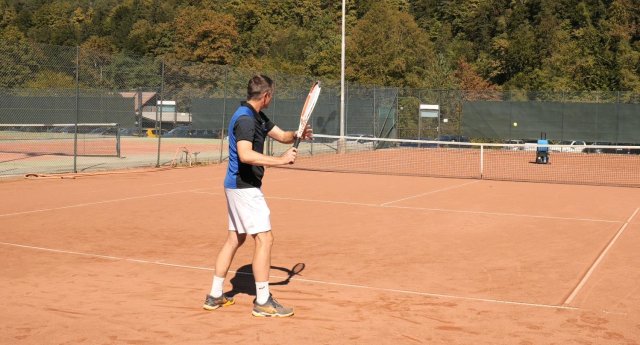
Position already in the right place…
Step 2: Start moving toward the right spot a bit earlier than the ball is being fed to you. Since you know where the ball will go, you can start earlier.

Again, you will have no problem getting to the meeting point earlier than the ball and feeling that time. You will also feel how well you can execute the stroke in terms of effortlessness.
Step 3: Now you can start moving only when the ball is fed so that you actually simulate a realistic situation.
Your goal now is to come as close as possible to that early set up to hit the ball and have as much time as possible between setting up and hitting the ball.
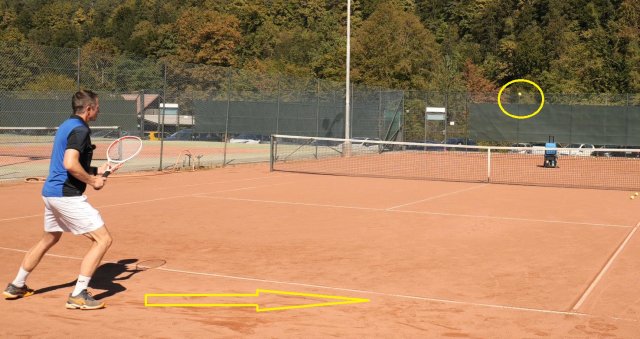
Start moving when you see the ball and try to “beat it” to the meeting point.
I also demonstrate the movement to short balls in the above video, so I just want to point out that you can do the same drills for short balls, too.
Short balls are opportunities to gain the upper hand in a rally or even to finish the point, and it’s critical that you react and move early to the ball so that you can hit a good shot; otherwise, that opportunity is wasted.
Another common situation where players don’t beat the ball often enough are overheads.
Players tend to become too mesmerized by the ball flying through the air above them to pay attention to their movement and the general concept of “beating the ball.”
In most cases, this concept needs to be practiced also on overheads, which give you a great opportunity to finish the point.
Summary
Embracing the concept of beating the ball can significantly improve your overall game if you haven’t yet mastered it.
In most cases, players adopt this concept subconsciously over time as they intuitively feel that they can hit the ball better.
However, another intuitive concept known as the “conservation of energy” could be holding them back from maximizing their early positioning ability.
Hopefully this video article reminded you—or even taught you for the first time—that you need to get to the right meeting point with the ball as early as possible in order to hit the best stroke you’re currently capable of.
This will, of course, require you to work on your anticipation, reaction and footwork skills, and as those improve over time, so will your overall level of tennis.

